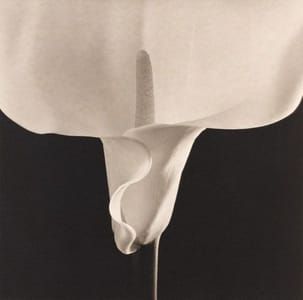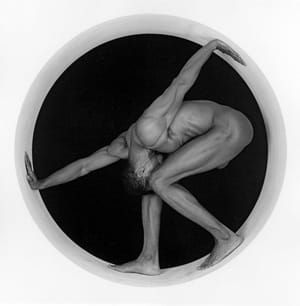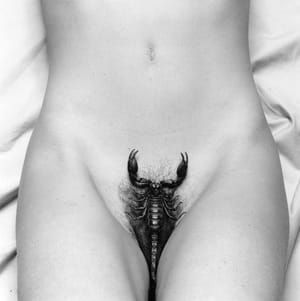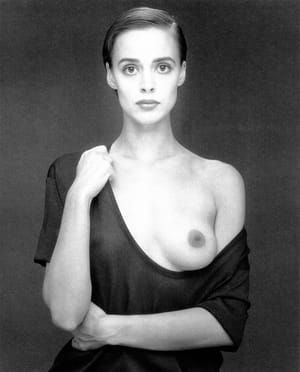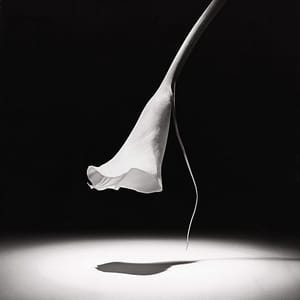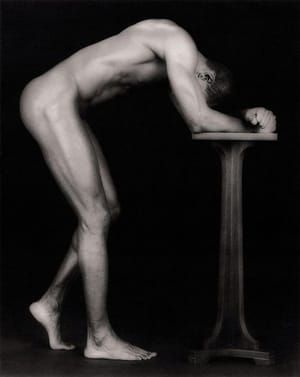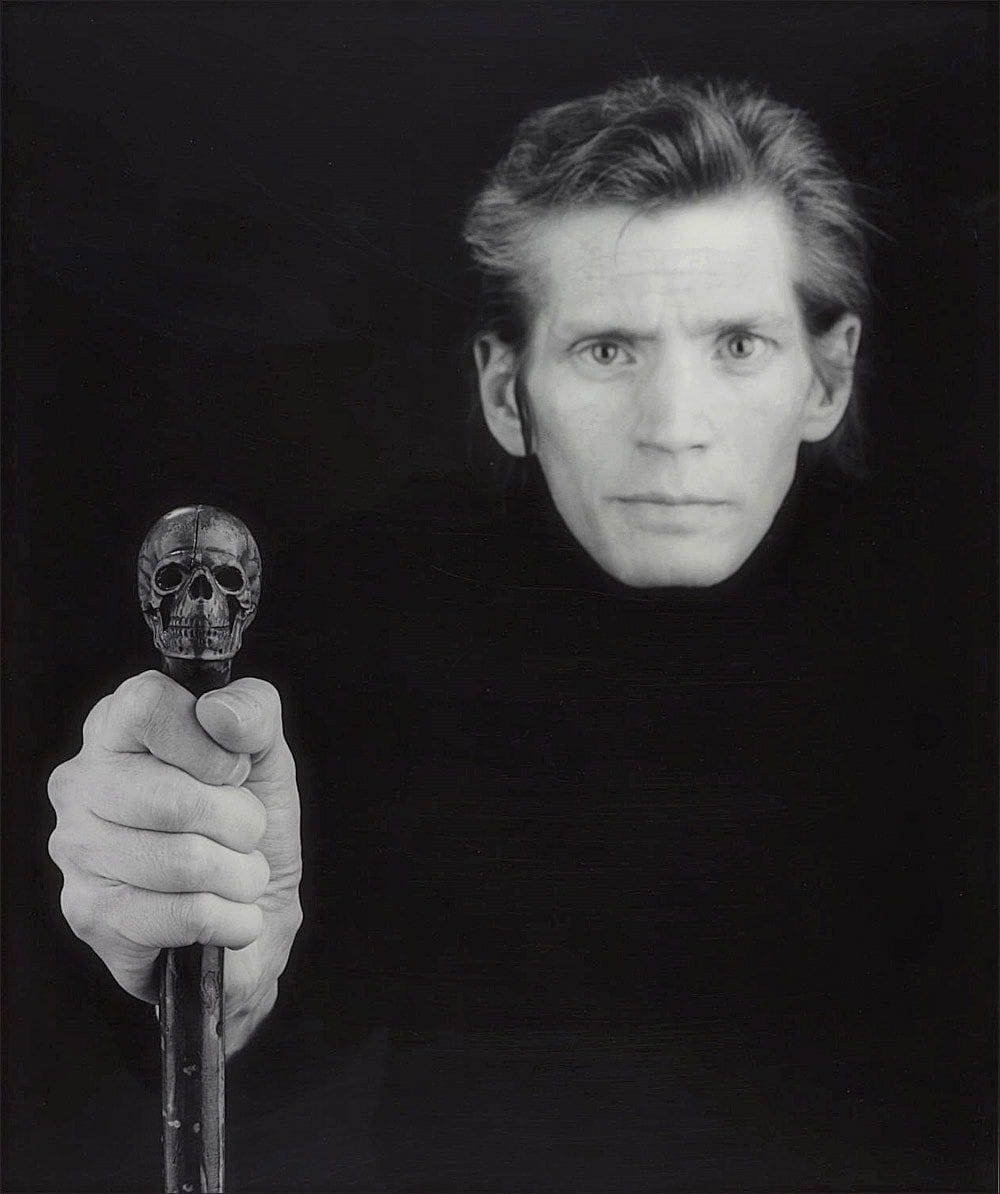

Self Portrait, 1988
Robert Mapplethorpe
In this black and white self-portrait the photographer Robert Mapplethorpe’s head, which faces the camera directly, is positioned near the top right-hand corner of the image, while in the opposite corner his right hand grips a cane topped with a small human skull. Mapplethorpe wears black clothing that covers his torso, neck and arms, rendering them indistinguishable from the black background. This creates the illusion that his head is floating in empty space and serves to emphasize the stark paleness of his skin. The size of the hand in relation to the head indicates that it is closer to the camera, suggesting that Mapplethorpe was sitting down when this shot was taken, and that the cane and his right hand were positioned in front of him.
The portrait was taken in 1988 in New York, the year before Mapplethorpe died from an AIDS-related illness. Mapplethorpe had originally intended to take a photograph of his walking cane ornamented with a carved skull, however, while he was preparing the shoot he decided to put on a black turtleneck jumper and create this self portrait instead. The shot was taken by the artist’s younger brother Edward, also a photographer, who was helped by Robert’s studio assistant Brian English. Edward Mapplethorpe began his career under the pseudonym Edward Maxey, assuming his mother’s maiden name, and the influence of his brother’s style is evident in his work. Patricia Morrisroe, Robert Mapplethorpe’s biographer, notes that Edward ‘intuitively’ understood what his brother was hoping to achieve in this image, and so focused the camera on the hand holding the skull cane, slightly blurring Mapplethorpe’s head (Morrisroe 1995, p.335).
Portraiture is a significant genre in Mapplethorpe’s work. He photographed fellow artists, writers, singers, art collectors and curators, although his most photographed subject was himself. The critic Peter Conrad asserts that Mapplethorpe considered personality to be ‘serial’, a concept which he applied to his self portraits. The artist depicted himself with devil horns, dressed as a woman, yielding a knife ready to thrust, and in the guise of a soldier or terrorist holding a rifle in front of an inverted pentagram, a symbol of the devil. It has been suggested that in this 1988 self portrait the artist is no longer playing a role. Instead it is a more intimate portrayal compared to previous depictions of himself. Mapplethorpe appears gaunt and weathered as this portrait was taken just months before his death. The slight blurring of his head in relation to his hand gives the impression that he is gradually fading away.
Mapplethorpe produced increasingly macabre and morbid work at this time, exemplified by his photographs of human skulls. He considered the skull the purest sculptural image of all for its clean lines were undisturbed by flesh or hair.
[http://www.tate.org.uk/art/artworks/mapplethorpe-self-portrait-ar00496]
© 1988 Robert Mapplethorpe
Robert Mapplethorpe
artistArthur
coming soon
